Context
In a team of 2, me and my partner built two VR experiences that involves 3D modeling original assets and programming a variety of VR mechanics.
Each project comes with a full round of the design thinking process: ideating, story mapping, building core environment and mechanics, and ended with a polished final demo. During each stage of the world build, we conducted user testings to gain feedback from users to improve the VR narrative. By the end of the course, I also wrote a research paper in which I investigated the potential of incorporating XR technology into digital product prototyping and testing.
Cornerstoen Project: Oasis
Story Telling in VR
Our first project, “Oasis”, is a VR cornerstone project that introduce us to storying telling in VR. Oasis is a story of a devastated traveller picking up different fruits in the desert while triggering the environment to transform from a barren dessert into an oasis.
Core Mechinics
During the world build, we practiced programming some core mechanics in Unity VR: teleport, generic trigger, throwable, and animation. We also experimented utilizing sound and text to narrate in VR.
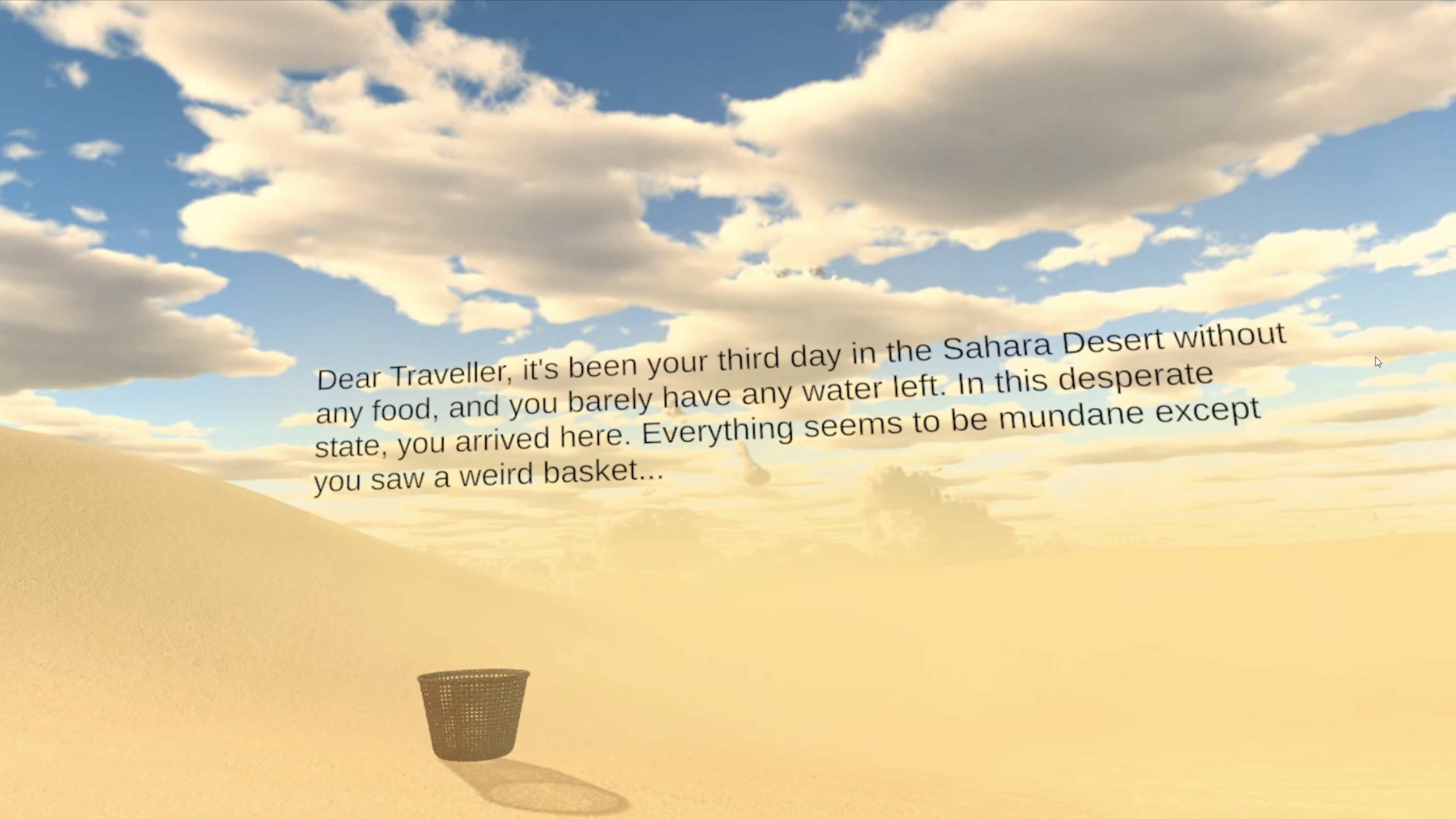

Collect Fruits using the Basket
For one of our core mechanics, the basket, we programmed the basket into an object that can “hold” all the fruits that the player throw into, so the fruit can move with the basket when the player is teleporting. We made this mechanics possible by programming the basket to be the parent of the fruit every time the basket detects a fruit is colliding with it.
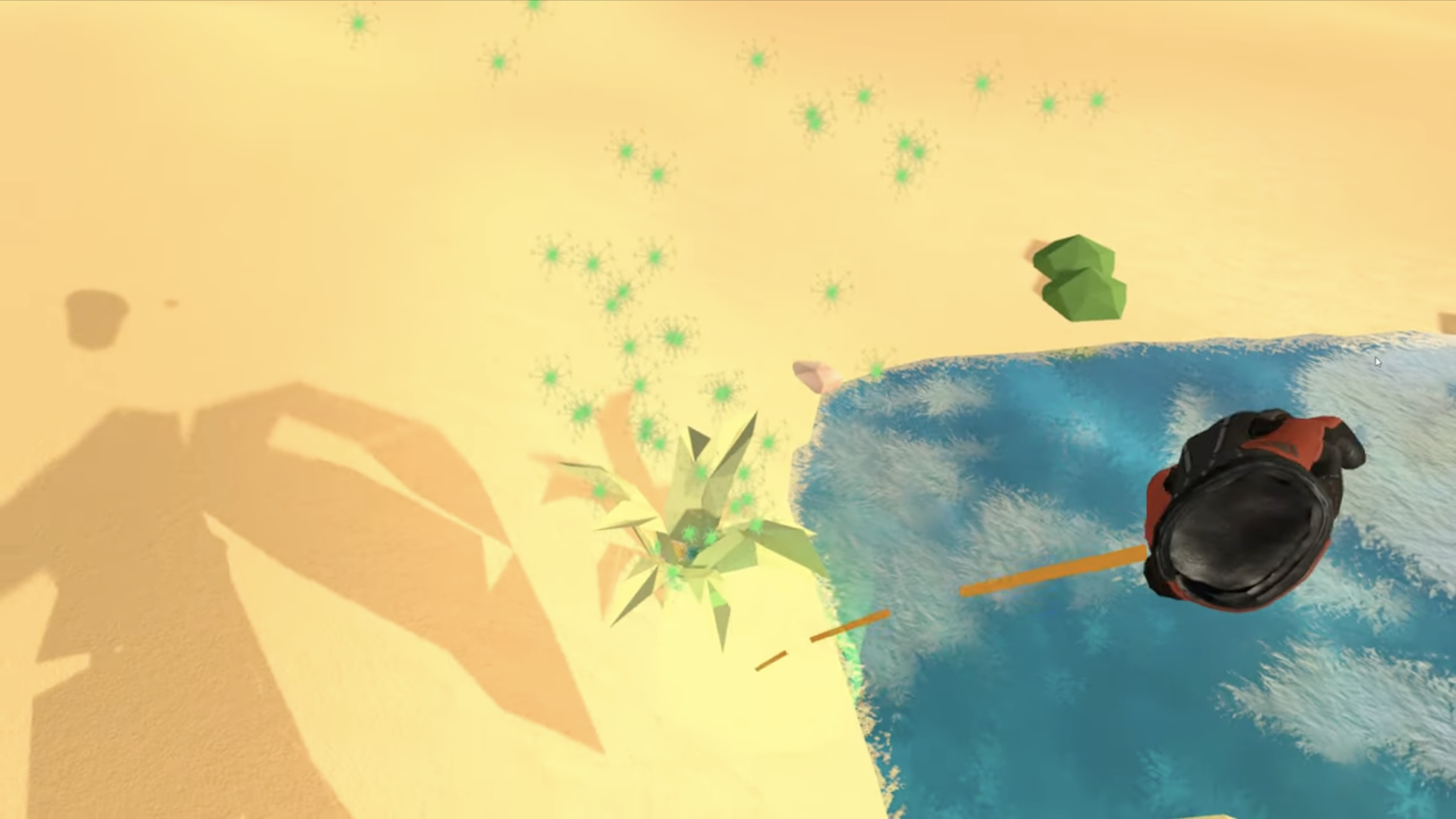
Animated light rays suggests the next step of the game

Buckets are programed as the parent of the fruits when they collide, so they can move together

Code snippet

The goal of the game is to collect all the fruits, so the dessert turns into an oasis
Final Experience
Final Project: Cybrog Manifesto
The Narrative: Being Cybrog
“Cyborg Manifesto” is a VR narrative that transforms the player from a human body to a robot body, that is, becoming cyborg. After completing one task in the experience, the player transforms one body part from human to robot.
The experience is carefully thought to leverage the immersive VR technology: after each transformation, a mirror would pop up for the player to observe this change. The player is able to wave their hands in real life and see their movements reflected through the mirror, creating a great sense of immersion and was responded very positively during user testing.
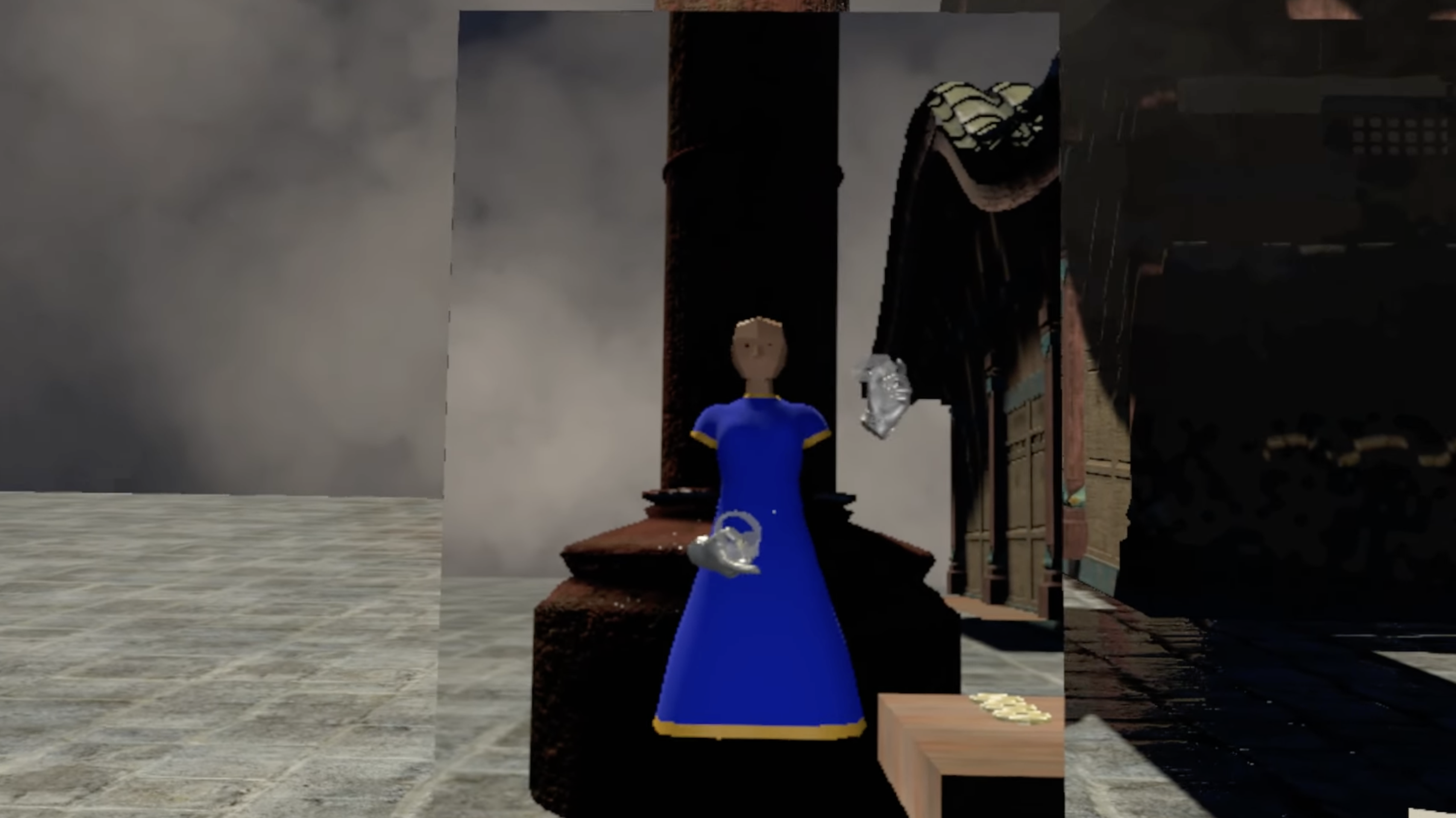
Start of the game: human body

Phase 1: human body with robot head

Phase 2: robot head and torso, with human bottom

Phase 3: fully robot
Caligraphy Mechanics
As one of our core mechanics, we created a “calligraphy tool” that uses ray-casting to simulate a calligraphy experience: when user presses a button to active the laser, the laser forms pattern on a blank surface that mimic the action of calligraphy.

Code snippet

Phase 1: human body with robot head
Replacing Text with Visual Instructions
Instead of relying on text-based instructions, we incorporated visual cues to guide users through each mini-game, making the experience more fun and straightforward.

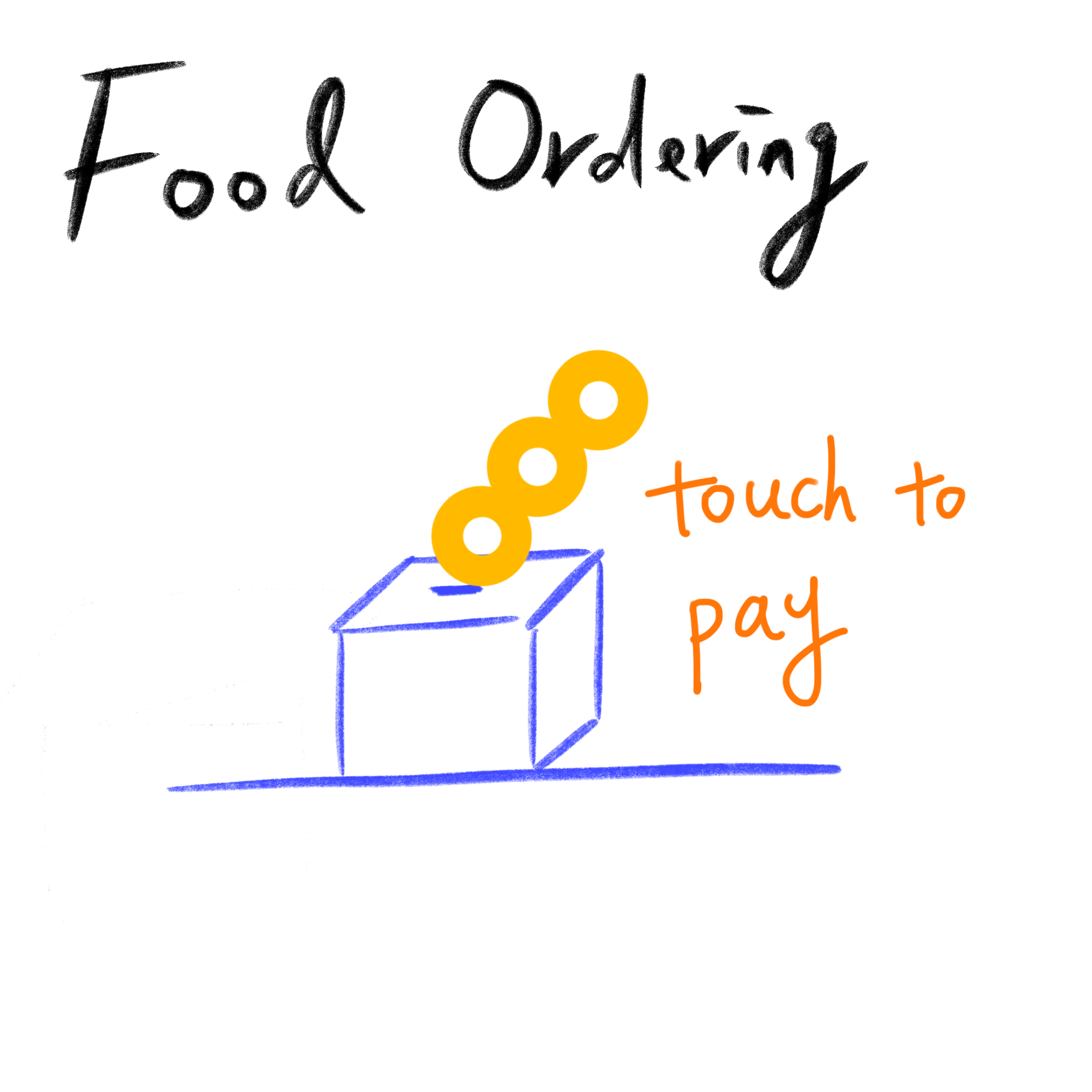
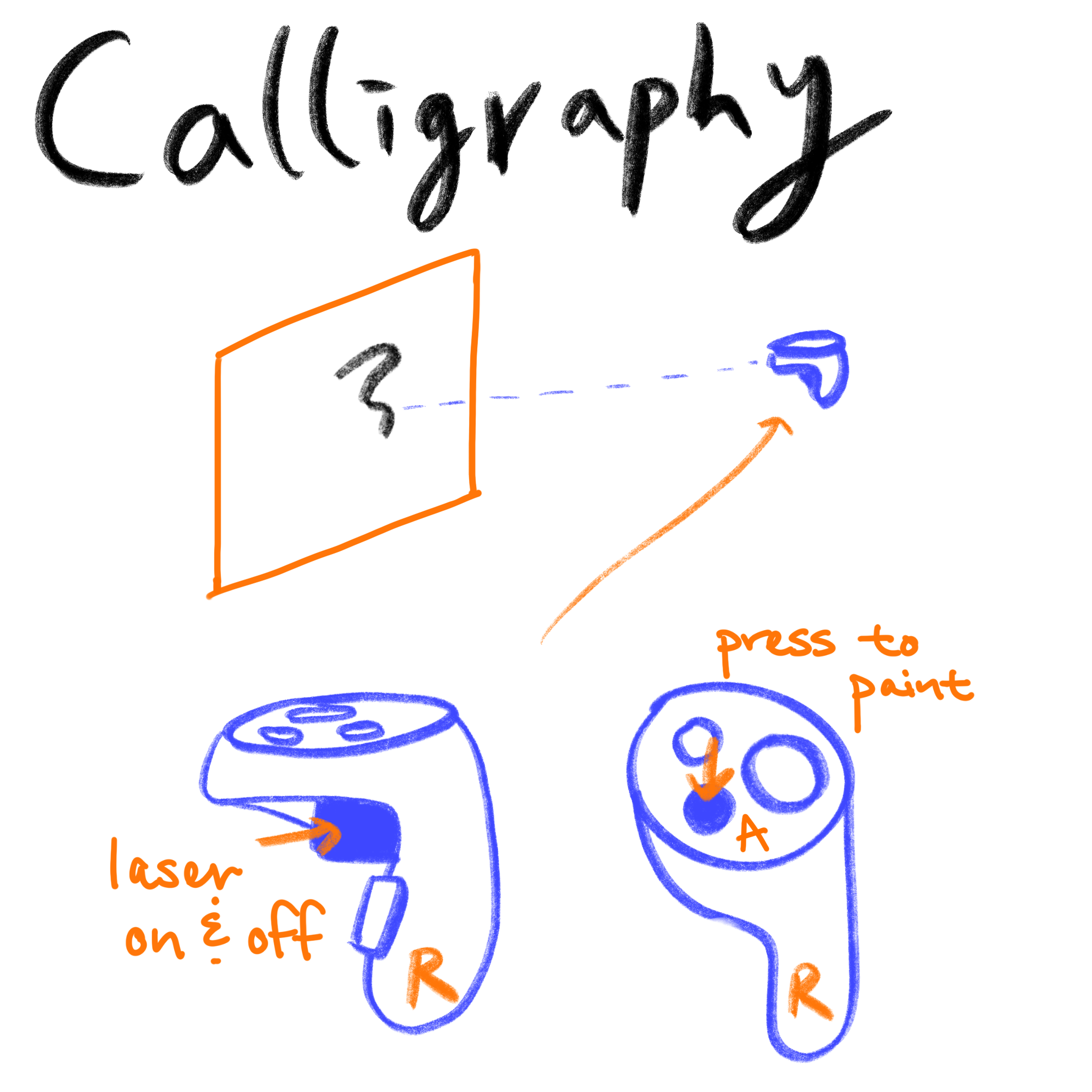
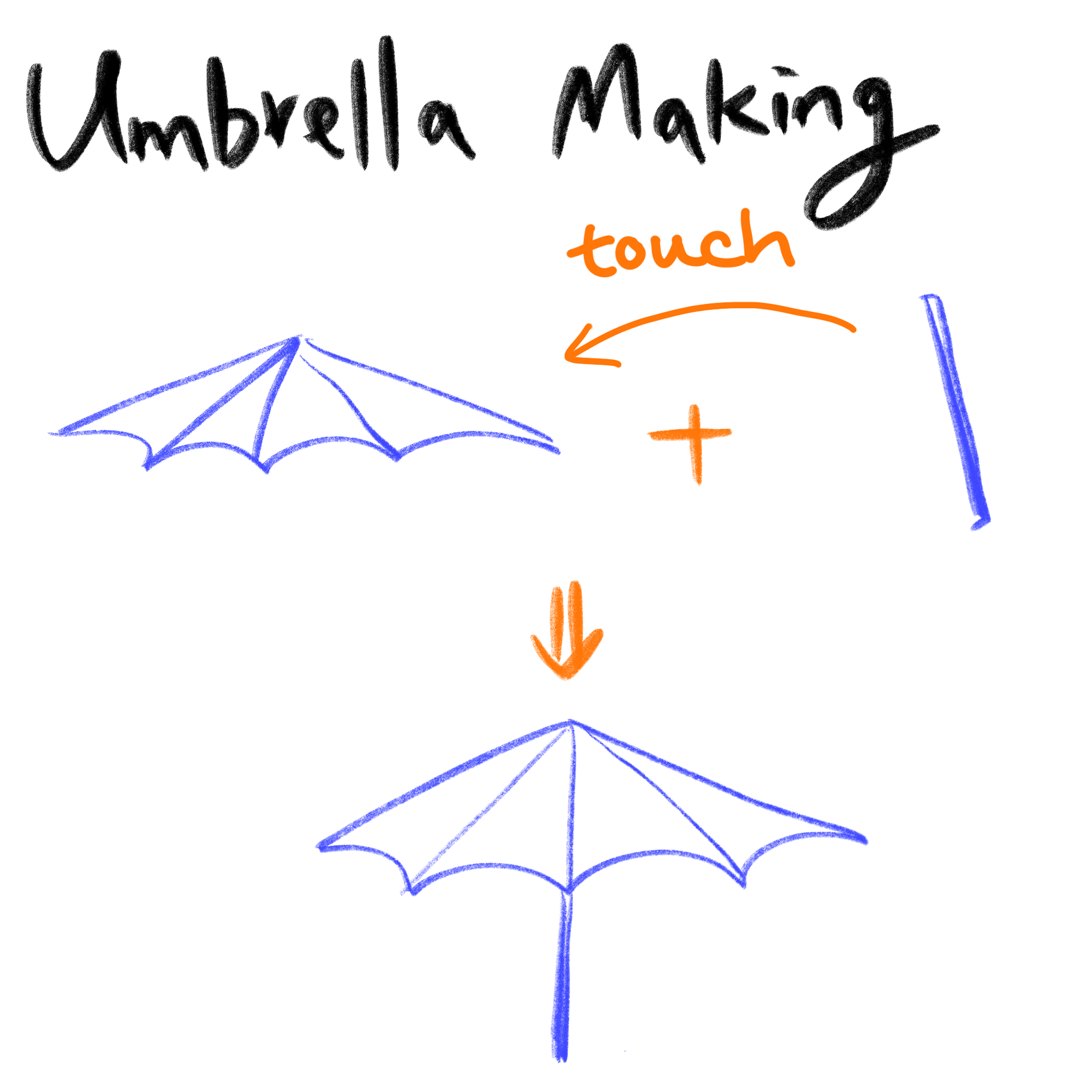
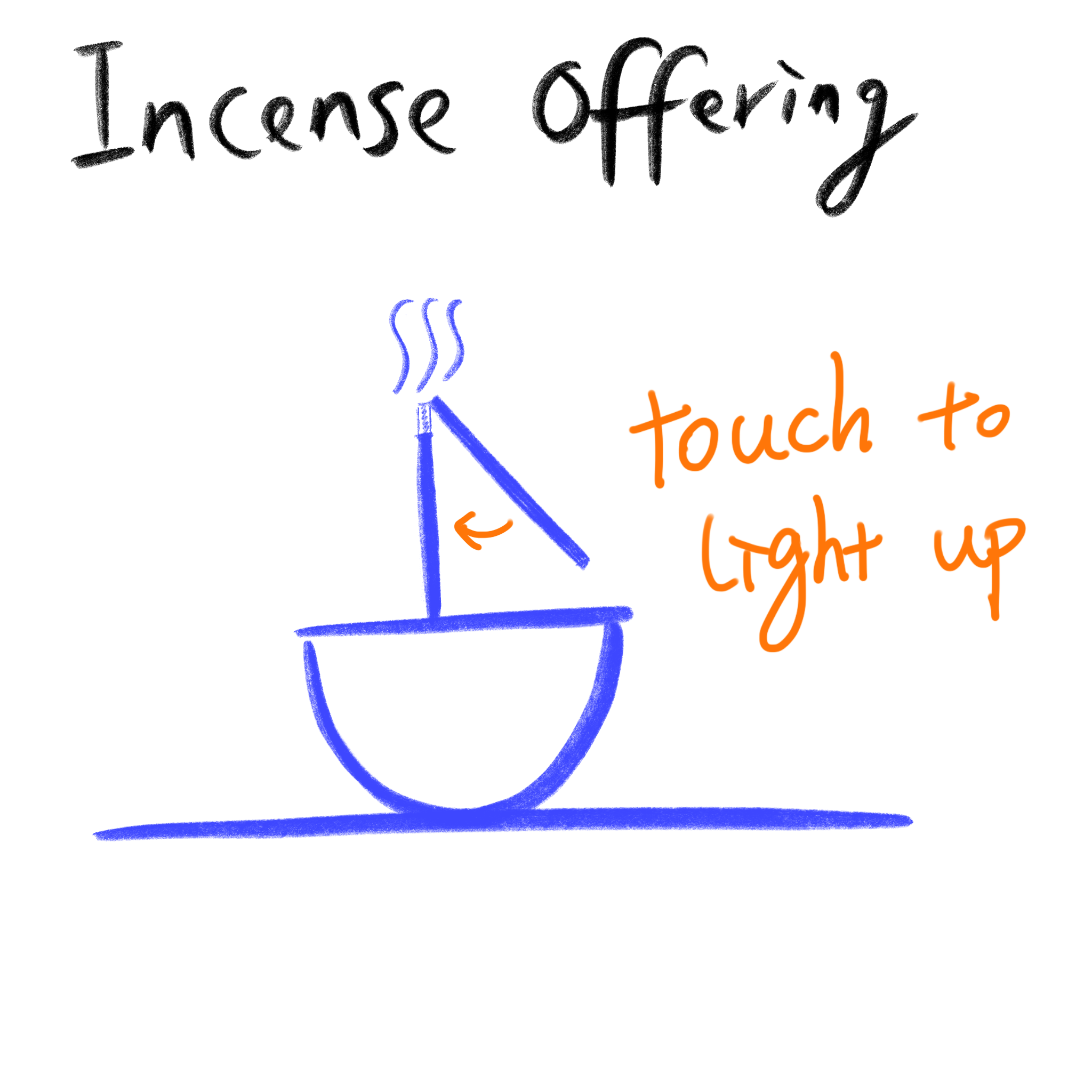
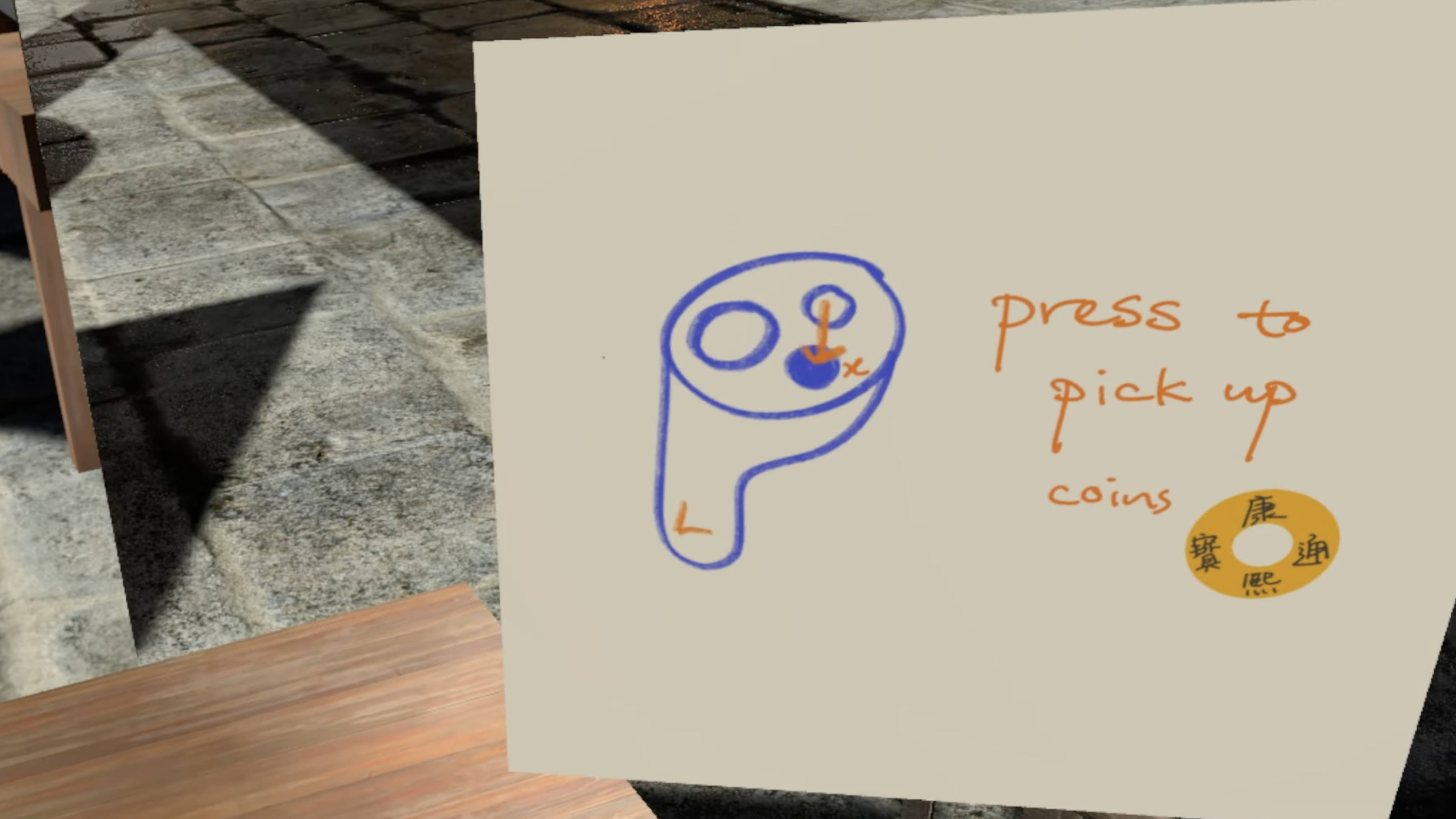
Coins pick up
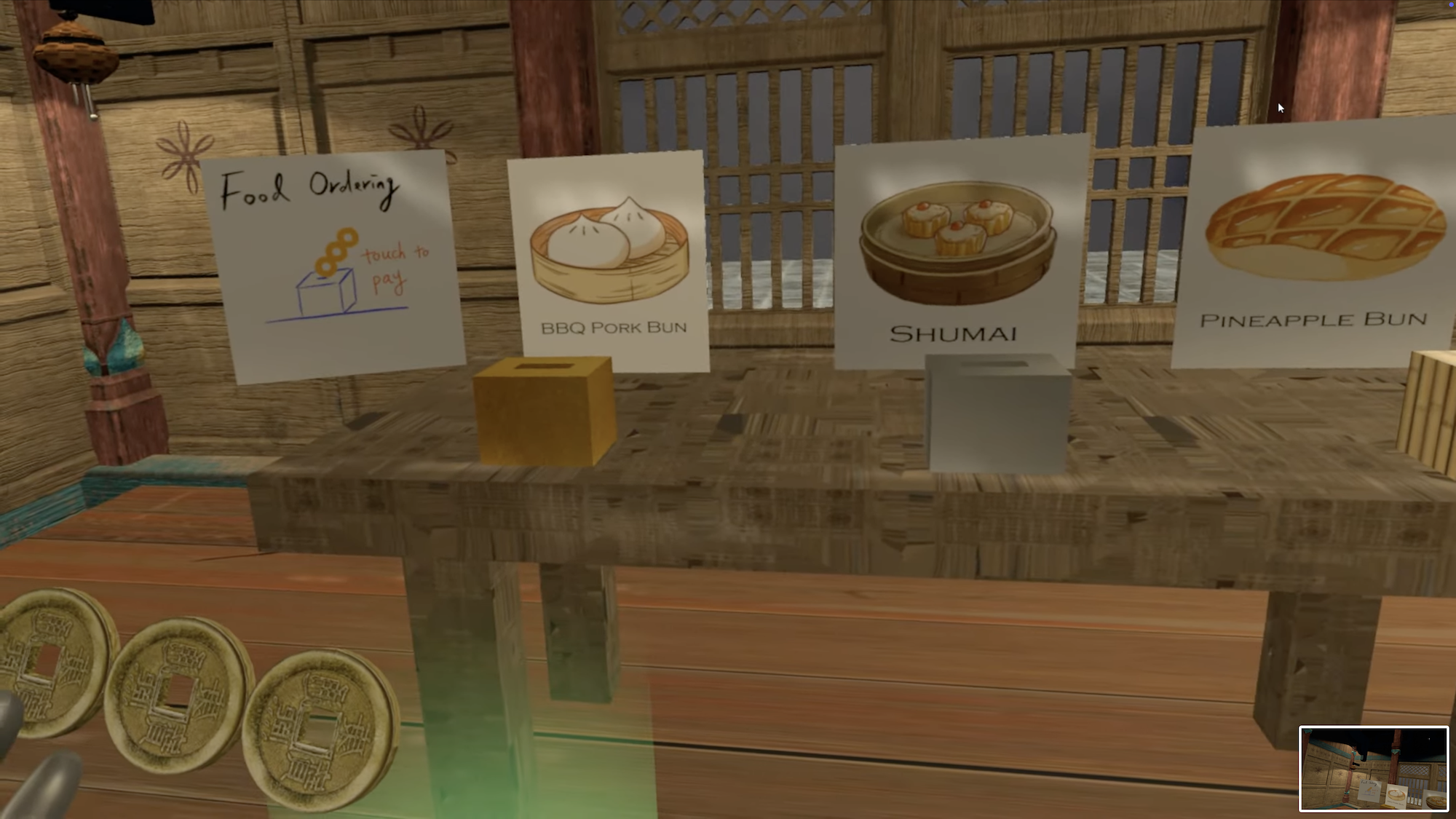
Using the coins to buy Dim Sums
Inspired by Tranditional Chinese Miaohui (Temple Fairs)
“Cyborg Manifesto” incorporates a rich variety of traditional Chinese elements: the traditional Chinese architecture, Chinese monetary system, street food, and calligraphy. It ends with lighting up an incense to worship the robot god while the player observe their body changing completely to a robot. Exploring the topic of cyborg using a VR experience set in a traditional Chinese style, we want to experiment how different elements that seems to be drastically different, can and clash and create fireworks.

Set Design Reference: Pingyao Old Town
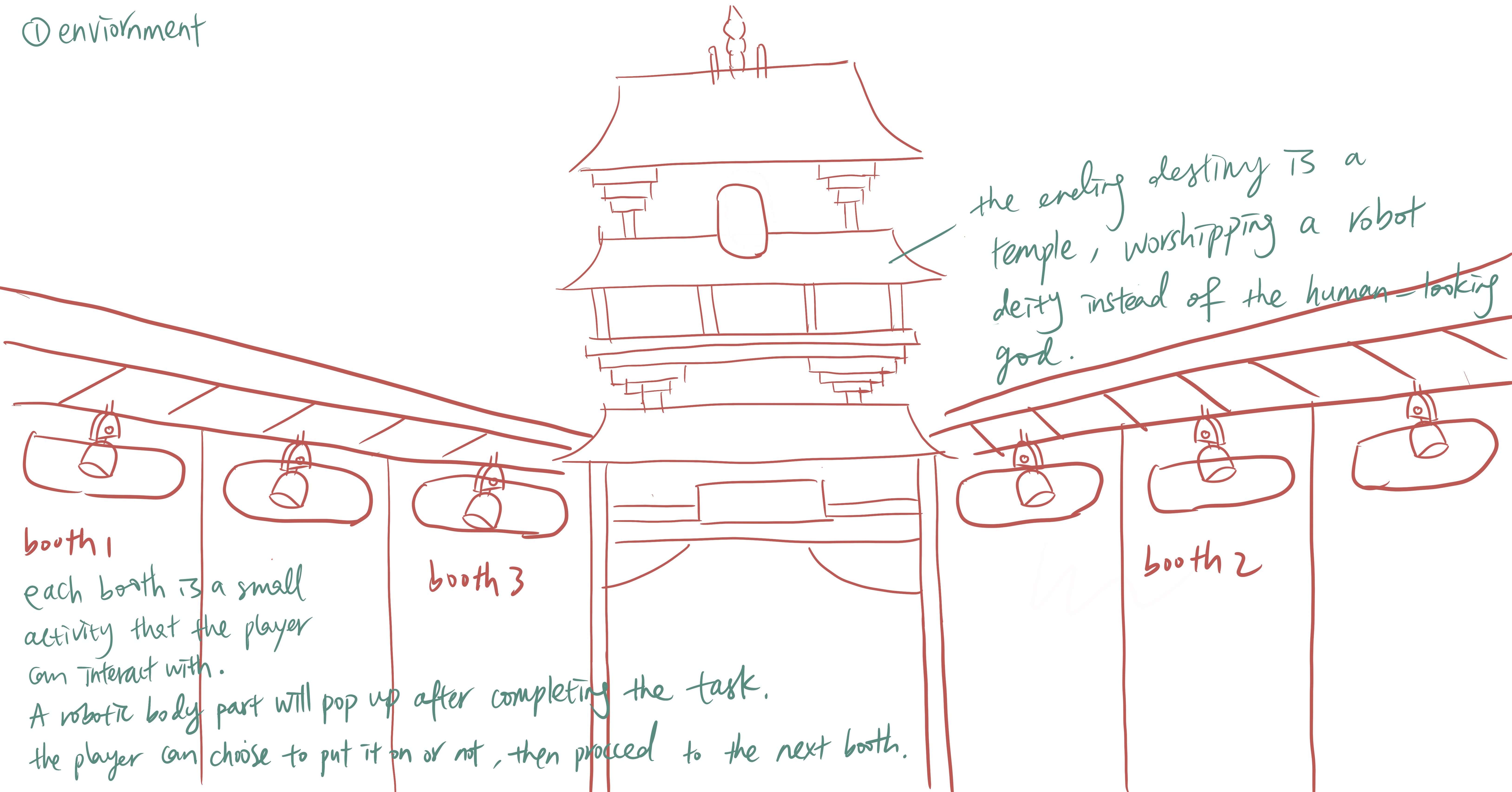
Set Design Sketches

Temple Fair Activity: Umbrella Making

Incense Lighting
Final Experience
Research Essay
Assessing the Impact of XR Technology on Digital Product Prototyping and Testing
Limitations of Current 2D Prototyping Tools and the Potential of Integrating XR Technology into Digital Product Design and Testing.